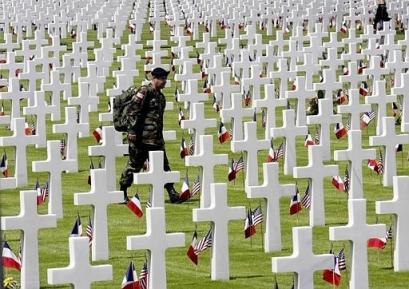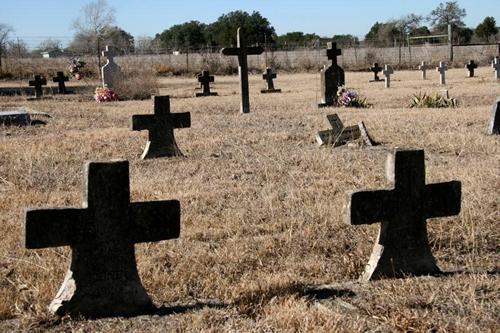Pre Launch Status (May 2010)
May 31, 2010 by Admin
Filed under Performance Stats

COM = Cross on the Moon; Our activities this month focused on Memorial Day and reviewing some articles from the Moon Society. This is a worthy organization that believes as we do that there will be lunar colonies one day. More info is here: Moon Society
Space industrialists are marching forward quickly. NASA held an industry day this month in Houston that discussed near future missions. These include remote robot operations from the earth to the Space Station and from the Space Station to the moon. This Friday, June 4th Space X could launch from Cape Canaveral for thier first test flight of the Falcon 9. This is NASA’s choice launch platform for when the Shuttle retires this year. With a 1.6 billion contract representing 12 flights and an option for additonal missions, the total contract value is near $3.1 billion. Read more here: SPACE X info
On April 22nd 2010 the Deep Horizon oil drilling platform collapsed and in the resulting days, oil and gas has been entering the Gulf of Mexico in the billions of barrels. Robots and their skilled operators are trying to cap the well, a hard task at 5,000 feet under water. Space is a similar, hostile environment. Distance to the moon is much farther. Robots will lead first but mankind will follow. There will be lunar societies. We hope individuals who work for months, maybe years on the moon will be free to practice their faith. Discussions at cross on the moon can help us understand if worship is valid, no matter where in the Universe.
Your Servant,
M.N.Clark
President, Cross on the Moon
Memorials

"Standing in the grassy sod bordering row upon row of white crosses in an American cemetery, two dungaree-clad Coast Guardsmen pay silent homage to the memory of a fellow Coast Guardsman who lost his life in action in the Ryukyu Islands." Benrud, ca. 1945
The single quality that arguably separates humans from other animals is our desire to mark graves to remember and understand life’s mystery. In this behavior we are alone in the animal kingdom. Porpoise use high-level language and many animals like the otter and monkey learn to use simple tools. But early man alone used collections of rocks to mark graves and through history adapted other forms as his world-view grew.
Family graves were often near the home or community churches but as populations moved to the cities, burial ground became scarce. The “Boot Hills” of the American frontier west were an early attempt to solve the hallowed ground problem. In the 1870’s, major cities in the United States started to turn to large, reserved areas of land for their cemeteries. Simply, the population needed space for the living and there were advantages in having a community of graves outside the city limits in park-like settings. The economics of caring for these parks created a noticeable segregation for its inhabitants. The wealthy families could afford ground with the best views and large plots for mausoleums and the poor were buried in the lower sections that were prone to flooding and were closely packed together. Some areas of these cemeteries were intended as temporary resting places.
Thousands of immigrants helped build the U.S. cross-continental railroads that bridged the Atlantic and Pacific oceans. Some of these worker’s faiths required that their bones be eventually returned to their home country. The markers for these people were not set to last even a decade in city cemeteries along the train tracks. Unfortunately, money never arrived, in most cases the identities of these hard working people are impossible to trace.
Simple markers like those shown in the black and white photo of 1944 are views of grave markers in Little Falls Cemetery, Attu, Aleutian Islands, Alsaka. The cemetery was a temporary location for deceased soldiers during the Aleutian Campaign of World War II; the bodies were disinterred after the war and reburied elsewhere.

Photo: Dmitri Kessel./Time & Life Pictures/Getty Images

American Cemetery at Colleville sur Mer. Situated above Omaha Beach, a place where the American military suffered staggering casualties on D-Day, the American cemetery at Colleville-Sur-Mer contains the remains of nearly 10,000 servicemen who died during the Normandy campaign. With marble crosses and Stars of David stretching as far as the eye can see, the cemetery is a solemn, breathtaking experience that all Americans should share. The average age of the dead at Normandy was twenty two.
Yes, cemeteries have social segregations and veterans are often grouped in areas of special significance or singled out with special inscriptions. National cemeteries exemplify this tradition of honoring its soldiers and statesmen.
This post about memorials comes on the heels of Memorial Day, a day reserved in United States for remembering its fallen soldiers. Every nation honors its veterans with visits to grave sites to reflect on the ultimate price that was paid. The predominant faith marker is the Christian cross although the Star of David and other symbols mark soldiers’ graves in Battlefield National Monument parks such as at Arlington, Normandy, Manila, and Cambridge. To learn more about these, see Battle Monuments. The Commission administers, operates, and maintains 24 permanent American burial grounds on foreign soil. Presently there are 124,909 U.S. war dead interred at these cemeteries, 30,921 of World War I, 93,238 of World War II and 750 of the Mexican War. Additionally 6,177 American veterans and others are interred in the Mexico City and Corozal American Cemeteries.
To be sure, there is a commercial aspect to Memorial Day in that our society treats the day to foster increased weekend commerce ranging from appliances to mattresses sales. But the core meaning remains to remember and give honor to those that died for us. That resonates with followers of Jesus. Here, the cross has significance for those remembering and those in remembrance. Christians know they will be both through their eternal life.

Well, so far we touched on memorial parks, segregated cemeteries, and the use of the cross to mark graves, especially those of soldiers in National Memorials. As mankind explores, it shouldn’t be a surprise that individuals will take their faith with them. We used the early American West “Boot Hills” as a burial place example but won’t the same be needed by moon settlers? Eventually men and women will die on the moon. They will be buried there. Some will make the ultimate sacrifice for their nation or perhaps our world.
Shouldn’t the symbol that marks these lunar graves be one of choice? Will there be a Lunar or Martian Memorial Park? The same needs mankind has to understand the mystery of life will continue beyond earth’s orbit. The economics of space will constrain the return of human remains in the way railroad worker bodies couldn’t be returned to their country. Believing we will outgrow our need for God is just wrong. Mandated identical flat plates on the moon to mark our heroes’ graves seem too sterile. We need our faith and should envision a collection of moon markers one day with at least a few being crosses.

- In 1917, after the Battle of Vimy Ridge in May, a Canadian burial officer decided to use shell craters as mass graves and in a crater at Zivy, near the village of Thélus, he buried 53 bodies
For more information, please see our May 2010 Newsletter.

